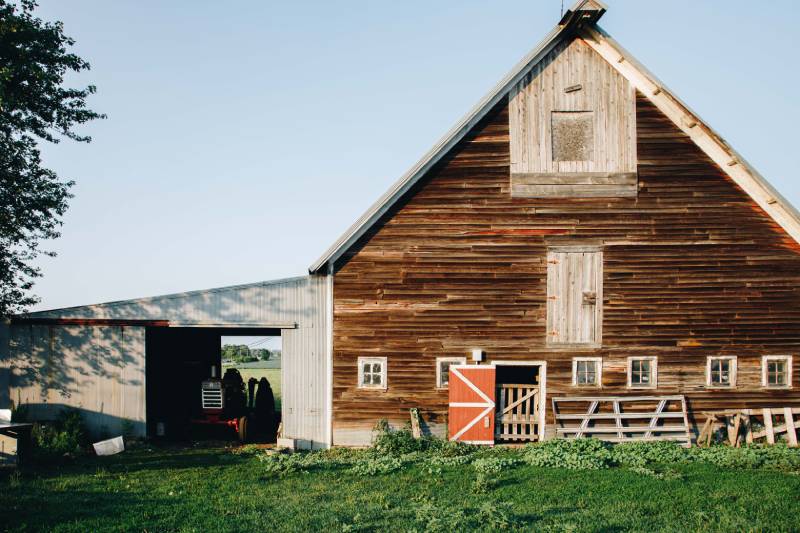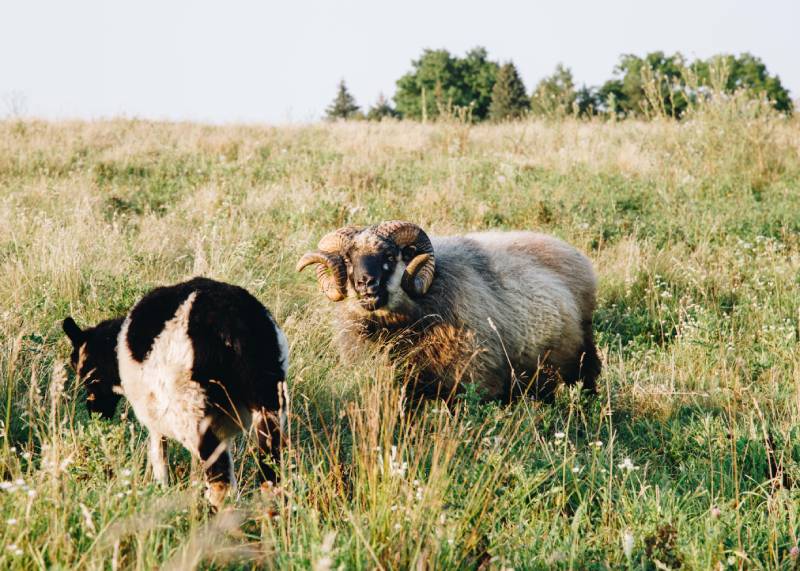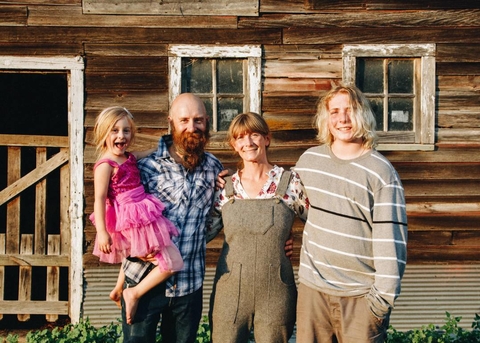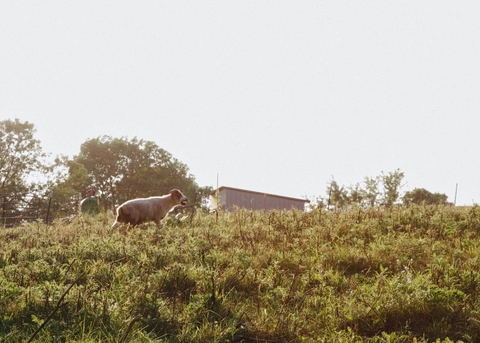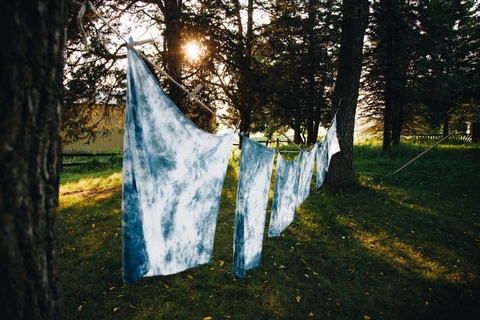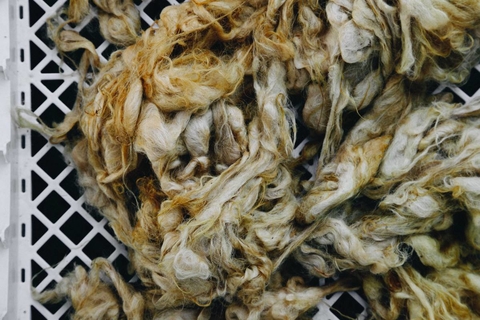The project report, “Understanding Minnesota’s Wool Economy,” provides data and insights gathered from 61 shepherds across Minnesota.
Hoping to benefit her community with sustainable systems inspired Theresa Bentz to move to a rural area in Northfield. But according to Bentz, it was the busy East St. Paul community of her childhood that set her on that path.
“I grew up understanding that there was a cultural significance to where food came from,” Bentz said. “I lived just blocks from where many Hmong refugees and immigrants settled. I remember seeing their small garden plots and community gardens. That was when I first started thinking, ‘Wait, I could have control over things like my food?’ It just kind of grew from there.”
Following a dream, eight years ago Theresa and her spouse, Jake, uprooted their Twin Cities suburban family and moved to Northfield. Together, they launched Get Bentz Farm, a sheep farm producing grass-fed lamb, wool bedding, fiber products and natural body care products.
At the start of this journey, Bentz found Minnesota’s wool producers to be somewhat segmented regionally, with little communication between the communities. It would be years before she found the tools and support needed to become established in the Minnesota wool market.
Weaving ties
In 2019, with the farm established, Bentz found space to grow and support others entering the industry. Teaming up with Maddy Bartsch from Three Rivers Fibershed—a group working to develop regional fiber systems in Minnesota—and the University of Minnesota Extension Regional Sustainable Development Partnerships (RSDP), Bentz helped launch a statewide project focused on mapping Minnesota’s sheep farming industry. She hopes the project will pave a smoother way for current and future Minnesota shepherds.
“When we started out with sheep, it was really hard to find anybody to process our wool. At the time there wasn't a lot of local industry, and [a complete depiction of the wool economy] really hadn't been explored in the state.”
Today, the project is helping knit together the loose threads of Minnesota’s sheep and wool industry.
Unraveling the past
“It wasn’t that long ago, the first half of the 20th century, that North America was a big producer of wool and sheep products,” Bentz said.
By World War II, wool was booming. As a durable, warm insulator even when wet, homegrown wool was the obvious choice for the blankets and jackets needed to keep American soldiers warm. However, soon after the war ended, synthetic fibers flooded the market. Wool and other crops like hemp, flax and linen started being sourced for less from Europe and Asia. For a time, shepherds received support from subsidies generated by imported wool garments.
“In the 1980s, we got rid of that taxation on wool garments coming in, and with that we also got rid of the subsidies to shepherds,” said Bentz. “At that point, the scale had tilted for shepherds. Wool was worth pennies to the pound. People stopped eating lamb and switched to beef. There was a mass exodus for shepherding that lasted decades.”
In recent years, demographic shifts and attention to buying local have helped revive the industry. “Lamb prices have increased thanks to the immigrant populations who are choosing that meat. People are starting to get into natural textiles and are getting away from the microfibers,” Bentz said. “People are thinking local, and we’ve seen a resurgence. But the industry is still small and segmented.”
Cut from the same cloth
Faced with the industry’s complex history and resulting issues, Bentz, Bartsch and the Southeast, Northeast and Northwest RSDPs spent over a year working to reach shepherds across the state to take part in the project. With help from graduate student Lily Johnson, an online survey was used to gather comprehensive information.
“They cast a really wide net in terms of who they wanted to get feedback from. Ranging from those who do this as a hobby to those who are full-time shepherds growing sheep for wool or meat,” said Southeast RSDP Executive Director Andi Sutton. “From there, they started mapping the industry landscape.”
The report found that 39 different breeds of sheep are raised on farms in Minnesota, for both wool and meat. Shepherds reported using a variety of sustainable farming methods. Common practices included managed rotational grazing, compost application, reduction of artificial and synthetic chemicals, and pollinator habitat plantings. Low financial reward, difficulty marketing and the cost of processing were described as the biggest barriers to shepherds selling wool.
“What we found through the study, which I wasn't expecting but was excited to see, is that we have a lot of shepherds in Minnesota. We also have a lot of diversity of sheep,” said Bentz.
According to the team, the project is the first step toward weaving together Minnesota’s dispersed shepherd communities. Not only has it created industry momentum, but it’s also generated interest from broader crowds. Thinking back to the East St. Paul community that helped inspire her journey, Bentz hopes she can help repeat the cycle.
“A lot of people are interested and excited about the project—in and outside of the industry. That tells me that more people are starting to think about local fiber and local systems. I think it's the beginning of a shift, and we’re excited for what’s next!”


